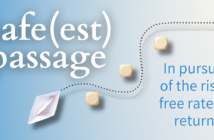Hospitality can expect improved 2024, but an unsettled economy keeps the pressure on
There’s a lot for the hospitality industry to look forward to throughout 2024, as spending on business travel is expected to finally surpass 2019 levels and the surge in leisure trips is a positive indication.
But even so, hospitality businesses should stay cautious. An unsettled economic environment, aggravated by an unsettled political environment in an election year, will keep the pressure on profits. That’s especially likely if inflation doesn’t relent and continues to damper travel demand and keep costs high.
In fact, increased, inflation-driven expenditures were cited as a top threat to profitability in 2024 by two-thirds of hospitality executives responding to HUB International’s 2024 Outlook Executive Survey. That’s affected not just commodity prices but wages, a big pressure point given the industry’s labor shortage. Plus, as severe weather events occur more frequently nationwide, related costs – for property insurance and rebuilding – create another burden to hoteliers.
Here’s what the industry can expect in the rest of 2024 and how it will influence risk management strategies moving forward.
HELP WANTED – STILL – AND SOLUTIONS, TOO
The hospitality industry eliminated 212,600 positions in 2023 from 2019 levels. Still, 82% of U.S. hoteliers say they’re looking for staff, and restaurants need more than 64,000 workers to achieve full staffing levels.
It’s an issue that led 72% of hospitality industry respondents to HUB’s survey to say has affected their organizations’ vitality, resulting in a strong focus on recruiting by more than half.
One way to boost the success of those efforts is through benefits that are highly personalized and create quality employee experiences. By developing an in-depth picture of individual employees’ needs and wants, hospitality employers can differentiate themselves in a competitive job market. Younger workers, for example, might be less interested in expensive health insurance, but prefer to increase access to mental health counseling and telehealth services. Older workers might prioritize prescription drug benefits and retirement programs.
Ultimately, though, focusing on employee well-being in general pays off – and not just in improved recruiting and retention. Nearly 85% of HR leaders cited better benefits as the way to lower recruiting costs and sick days, and improve employee satisfaction.
PREPAREDNESS FOR THE NEXT DISASTER
Risks – acts of God or man – challenge the industry’s resiliency. COVID-19 imparted hard lessons about the importance of risk management and the impact of sound practices on their operations.
But preparing for the next risk can be problematic, especially as serious weather disruptions become more common and more devastating. The hospitality industry can expect property insurance rates to rise as much as 20% in 2024; rates for catastrophic (CAT) perils in high-risk zones may rise by 70%.
One more manageable risk is liquor liability in an era of nuclear verdicts for overserving inebriated customers, which calls for more rigorous training and oversight. In the short term, liquor liability coverage is expected to rise by as much as 20%. Meanwhile excess coverage is expected to increase similarly, and getting limits covered by a single insurer will be difficult. Also under pressure will be employment-practices liability insurance as insurers add wage-and-hour exclusions and reduce limits in response to growing class-action litigation.
Resorts, hotels, or restaurant chains with positive loss history – particularly those located in CAT-prone areas – may benefit from joining a captive. Captives give access to insurance capacity that would be otherwise difficult to obtain. In addition, companies participating in a captive are entitled to share in any underwriting profits.
PROTECTING PROPERTIES AGAINST WHAT MAY COME
Extreme weather – wind, rain, heat, fire – all pose a threat to restaurant, hotel, and resort properties, making aggressive risk management against growing exposures key for favorable renewals.
On one front, that means ensuring properties are maintained and exceed safety standards, like upgrading windows and roofs. But weather and disaster modeling can reduce vulnerabilities and be a positive at renewal. While some mitigation techniques like using geospatial intelligence to predict earthquake, wildfire, or flood vulnerability may seem prohibitively expensive, even adding simple measures such as water monitors – which insurers often distribute for free – will make properties a more attractive risk.
PLAN FOR THE FUTURE
It’s never too late to have a strategy in place that encompasses insurance, risk management, and a vital employee workplace.
An experienced broker will evaluate insurance programs for coverage limits and gaps and ensure risk management resources are provided to support business goals. A wealth of benefits options are available, along with ways to evaluate individual workers’ needs. The right experts can help ease the challenge of designing a differentiated, personalized benefits program without breaking the bank.





